Blue Pure 411 Review
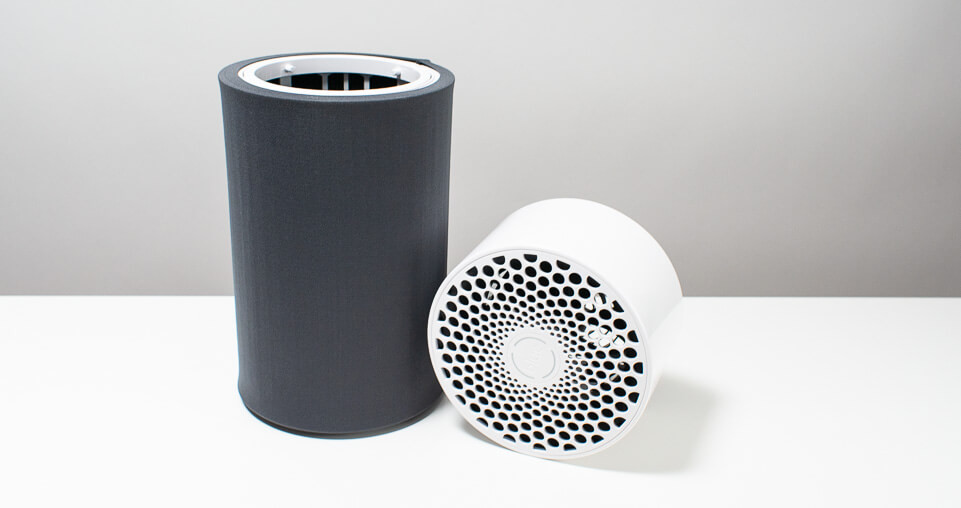
Feature Scores
Pros
- Terrific energy efficiency - extremely good CFM/watt ratios on all speeds, especially medium and low (best)
- 5 year warranty if you register the product with the manufacturer
- Very light weight
Cons
- It’s light but also very tall so it tips easily
- There’s no grille – the fabric pre-filter directly covers the particle filter which means there’s no protection for the filter
- There’s no HEPA filter – unit is equipped with a proprietary particle filter with an unproven track record in the industry
- Control panel lights don’t turn off
Editor's Score
Quick Facts
| Particle filter type | Proprietary |
|---|---|
| Gas filter type | Carbon |
| Pre-Filter | Fabric - wraps around bottom of unit |
| Output | Approx. 120 CFM |
| Air Movement | Fabric pre-filter > particle filter > carbon filter > up and out of top of unit |
| Number of fan speeds | 3 - low, medium, high |
| Size | 17 in. tall cylinder with 8 in. diameter |
| Weight | 3 lb. |
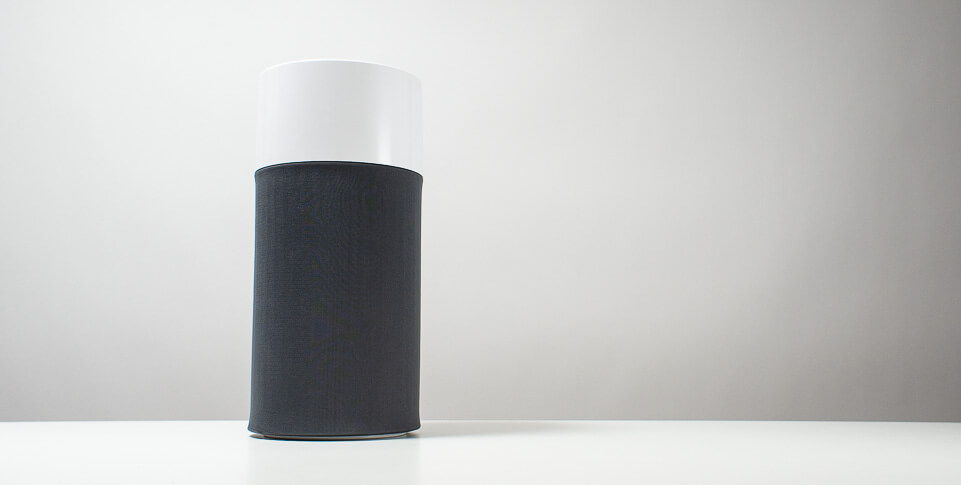




Analysis
A step by step breakdown of the Pure 411's performance.
Air Processing Performance
Test Results
In a 150 sq. ft. test environment the Blue Pure 411 with its proprietary particle filter (non-HEPA) and 120 CFM of air processing power was able to lower particle concentration in the room from 10,000 particles per cubic ft. down to 1,000 particles per cubic ft. in 18 minutes – a very similar time to HEPA equipped units with similar output. The GermGuardian AC4825 and Honeywell HPA100 accomplished the same feat in 23 minutes and 22 minutes respectively.
After 11 additional minutes the 411 was able to achieve as low of a room concentration as was possible for this unit – 600 particles per cubic ft. This result was also similar to HEPA equipped units at the same output – the AC4825 was able to achieve 500 particles per cubic ft. and the HPA100 was able to achieve 900 particles per cubic ft. given an additional 40 minutes and an additional 27 minutes, respectively.
Filter Analysis
Particle Filter
The 411 is equipped with a proprietary particle filter. The manufacturer claims that this filter is able to remove up to 99% of pollutants that travel through it. The industry standard for particle filtration (mold, pollen, dust, etc.) is a HEPA filter. A HEPA filter removes 99.97% of particles 0.3 microns and larger.
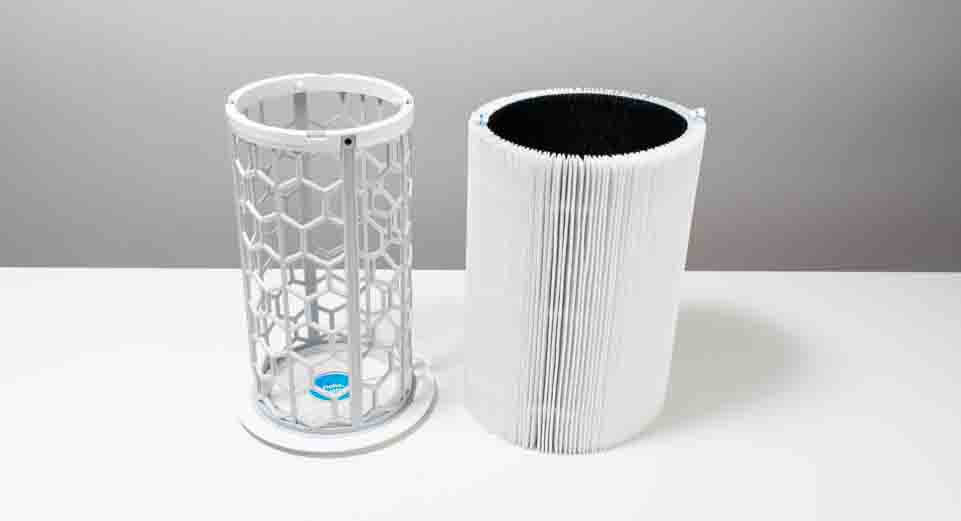
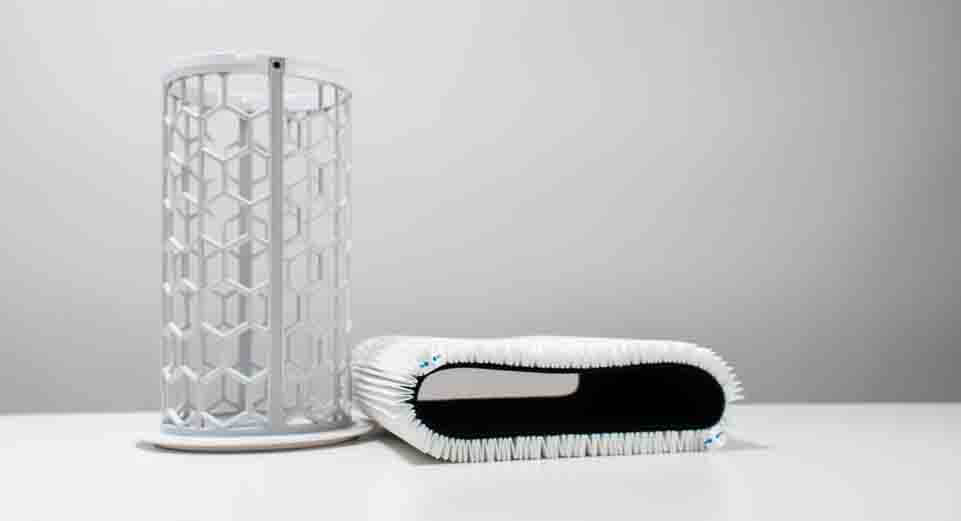
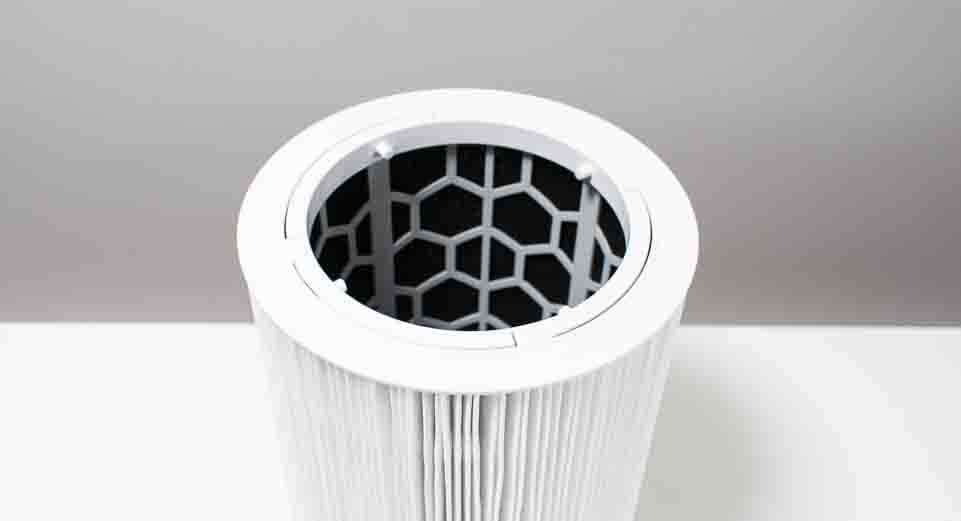
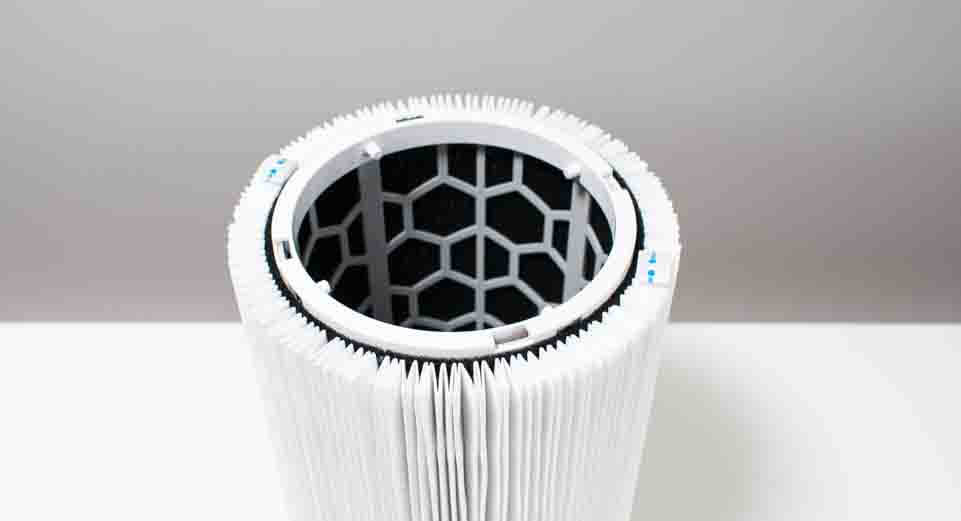
Theoretical Analysis
There’s only a 0.97% difference between the 411’s particle filter’s efficiency and a HEPA filter’s efficiency (99.97 – 99 = 0.97). This may not sound like much but consider this:
First of all, if you’re sitting in a room without an air purifier right now, it’s likely the room air contains at least 10,000 particles per cubic foot. In other words, particle concentration in the average room is usually in the 1,000s, if not the 10,000s of particles per cubic foot.
Second, the room you’re sitting in right now likely contains at least 1,000 cubic feet of air. This is how much air is in a 10 x 10 ft room with 10 ft ceilings.
Now multiply the minimum likely concentration of particles in the room by the minimum volume of air in the room: 10,000 particles per cubic foot multiplied by 1,000 cubic feet = 10 million particles. This means that even if you’re in a fairly small room with fairly low particle concentration there’s still at least 10 million particles in the air in the room you’re sitting in right now.
So, back to the percentages we gave earlier: the 411 particle filter’s efficiency is 99% which means that for every 10 million particles that travel through the filter, 100,000 make it through. A HEPA filter’s 99.97% efficiency means that for every 10 million particles that travel through it, only 3,000 make it through. This demonstrates a much more substantial difference in filter efficiency than what a small percentage difference would at first appear to indicate.
The bottom line? The 411’s particle filter is highly efficient but a HEPA filter is substantially more efficient. Thus, the 411’s lack of a true HEPA filter is a strong negative for this unit.
Contradictory Test Results
Theoretically, the 411 is equipped with an inferior particle filter. Why did it perform just as well and sometimes even better than HEPA equipped units (at similar output) in our testing?
The answer has to do with the limitations of our tests. Our testing was limited to measuring concentration for particles 0.5 microns and larger. Our testing also did not include a wide variety of particles (smoke, pollen, pet allergens, etc.) with a wide variety of size distributions. We primarily tested for the removal of household dust particles.
A more complete more precise test would show the theoretical improvement of going from the 411’s proprietary filter to a HEPA filter much better.
Still, it is of note that the 411 at least provides similar filtration speed to HEPA equipped units (with similar output) for removing household dust.
Also of note is the fact that the 411, like other units at approx. the same output (around 100, 120 CFM), could not lower particle concentration in the room much past 500 or 600 particles per cubic foot. Higher output units like the 250 CFM Coway Mighty and Winix 5500-2 were able to get to 100 particles per cubic ft. quite easily.
Thus, if your goal is as low of room particle concentration as is possible you not only require proper filtration, but also sufficiently high CFM, and the higher the CFM the better (more on this in just a moment).
Gas Filter
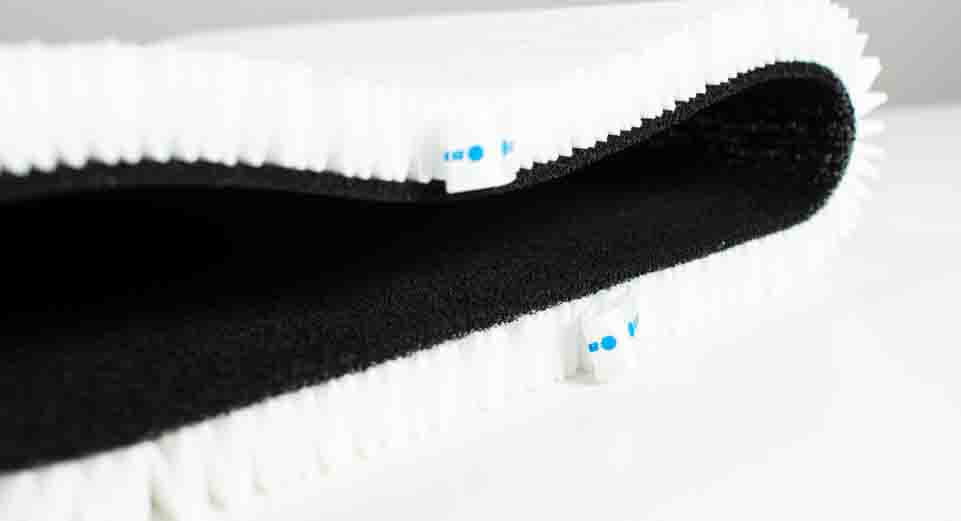
The 411 features a single combination particle and gas filter. The particle filter wraps around the outside of the cylindrical filter while the gas filter wraps around the inside. The gas filter is comprised of activated carbon – the industry standard for gas filtration. Thus, this unit features very similar gas filtration to many other air purifiers on the market.
The difference here is that the gas filter is combined with the particle filter. Thus, gas filter replacement requires replacement of the whole filter. And the gas filter is likely to saturate much more quickly than the particle filter. So, if gas filtration is important to you, be aware that you’ll need to replace the whole filter often, at the full cost of a combined particle and gas filter.
Most other air purifiers on the market have separate gas and particle filters. Thus, the gas filter can be replaced independently more frequently at lower cost - gas filters are usually less expensive than particle filters plus you don’t have to replace both as you do with the 411.
Pre-filter
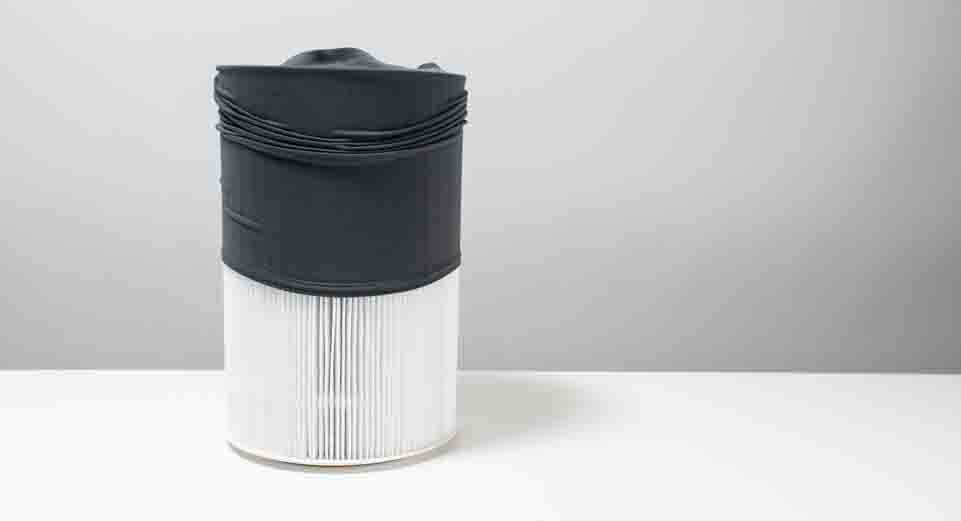
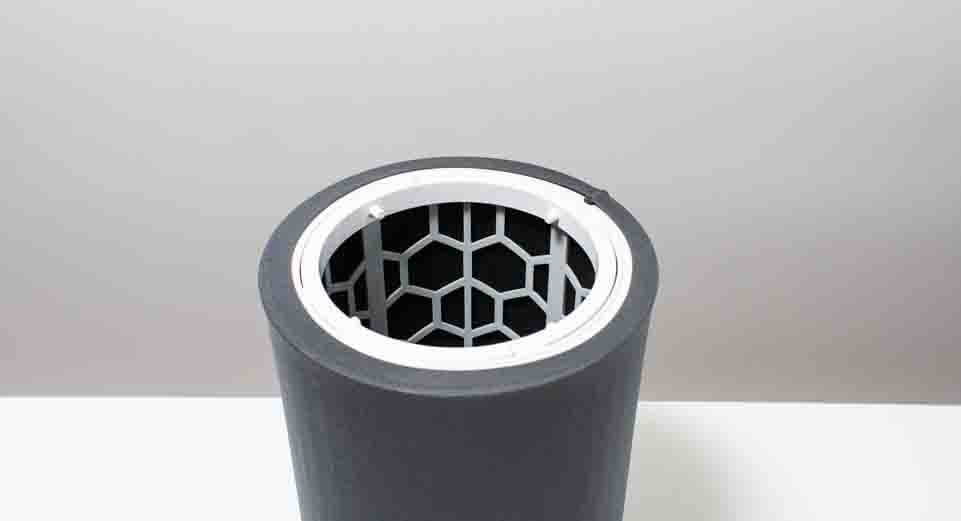
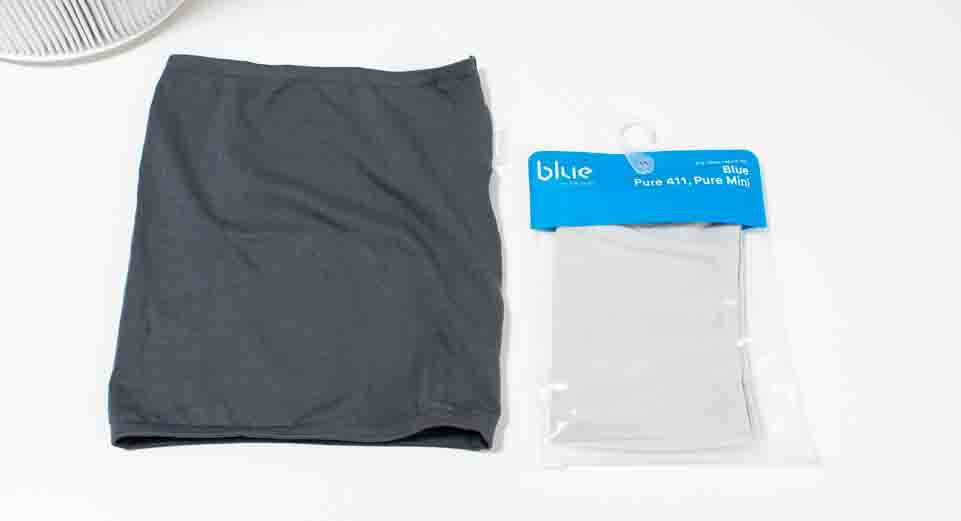
The 411 features a fabric pre-filter. The pre-filter wraps around the bottom of the unit. This is one of the more unique implementations of a pre-filter that we’ve seen come to market.
Most other air purifiers at this price point simply don’t have a separate pre-filter. Instead, the separate carbon filter on such units also doubles as a pre-filter. With this implementation, the cheaper carbon filter keeps the more expensive particle filter from saturating as quickly with large particles, but the carbon filter (although cheaper) still has to be replaced at cost when it saturates with larger particles. Something that isn’t true for the 411.
The 411’s pre-filter does not need to be replaced. It can be vacuumed and/or washed. Here we have a cost savings in filter replacement compared to other air purifiers on the market at the same price point. And this essentially negates the slight price increase (due to the 411 having a combination filter) we talked about earlier. All in all, filter replacement cost is much the same for the 411 compared to other air purifiers at the same price point.
This implementation has one other benefit (other than cost savings) as well: You can essentially choose the color of half of the air purifier – different color pre-filters are available for purchase from the manufacturer.
This implementation does have one shortcoming though: the pre-filter is fully visible. Remember, the purpose of the pre-filter is to collect large particles. And that is exactly what the 411’s pre-filter does. And so, all of these large particles collecting on the pre-filter are visible at all times. This means that you actually see hairs, fibers, etc. collecting around the bottom half of this air purifier. Maybe you find this interesting. We think it greatly diminishes the otherwise great aesthetics of the unit in everyday use.
Air Movement
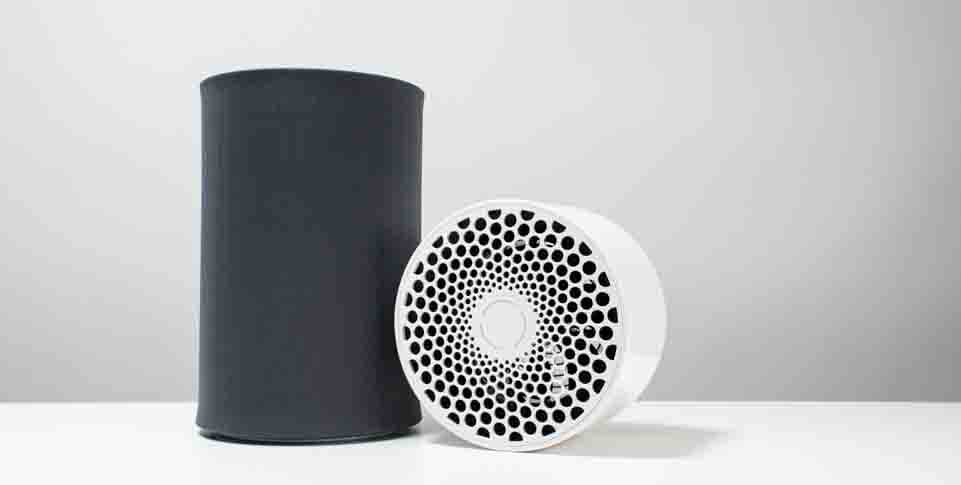
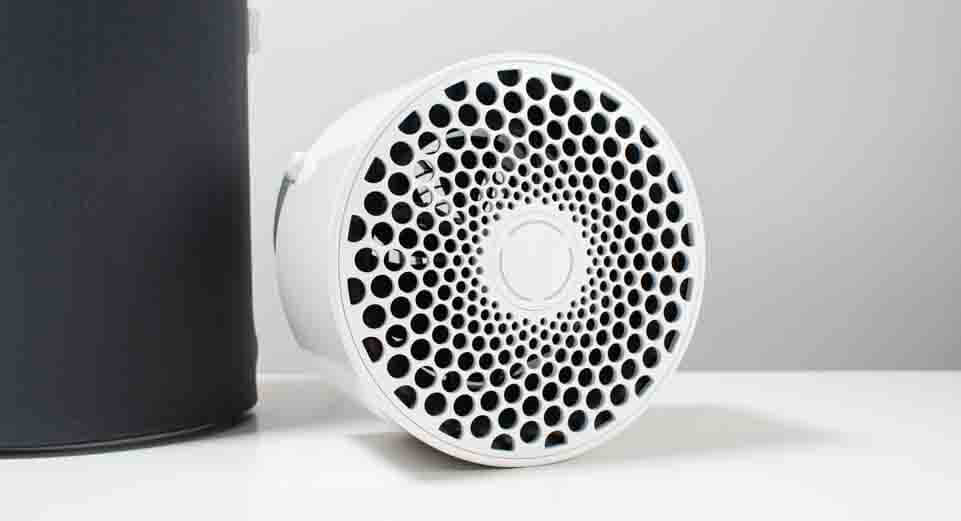
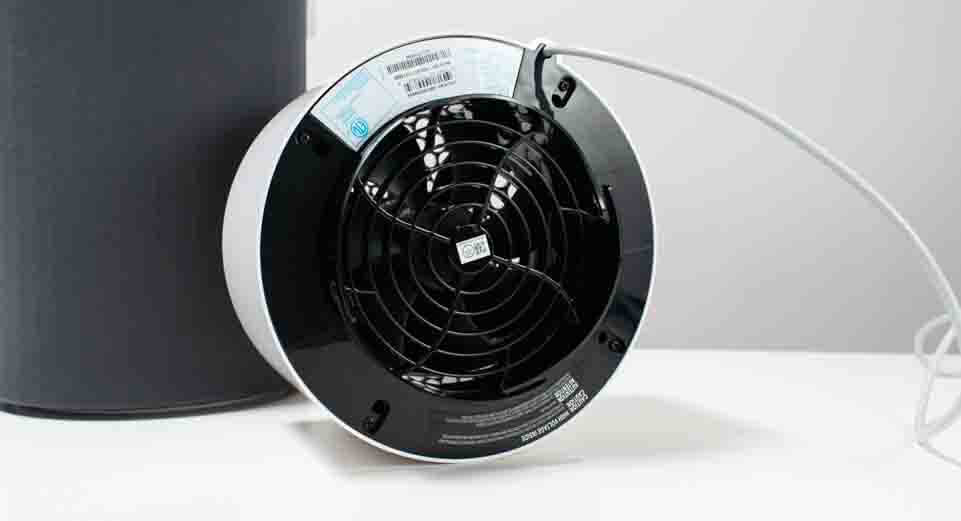
The Blue Pure 411 is able to filter 120 cubic feet of air per minute (120 CFM). Popular competitors at this price point – the GermGuardian AC4825 and Honeywell HPA100 – have approx. 140 and 110 CFM, respectively.
This level of output paired with an adequate particle filter makes all three of these units viable options for rooms in the 150 sq. ft. range. However, they do need to be run at maximum fan speed to do so. On this fan speed they’re quite loud.
Higher CFM units can be run on lower fan speeds to provide the same output (and therefore the same area of coverage) much more quietly. For example, a 250 CFM unit like the Coway Mighty or Winix 5500-2 can be run on a medium setting to output at approx. 100 to 120 CFM. On this setting they’re quieter and can still properly lower particle concentration in a 150 sq. ft. room.
Special Note
Unlike the GermGuardian AC4825 and Honeywell HPA100, the Blue Pure 411 has a 360° inlet. Note that this has little to no impact on the unit’s ability to clean air. Our testing showed that two factors dominate a particular air purifier’s ability to clean air:
- filter type
- output (CFM)
Air inlet (and even outlet) location and type (360° vs a single one-sided inlet/outlet) have little to no impact.
Energy Efficiency
The Blue Pure 411 is one of the most energy efficient air purifiers we tested. It’s also the most energy efficient unit in its size class.
At max. output it drew only 9.7 watts of power. For comparison, the AC4825, at similar output drew 44.2 watts while the HPA100 drew 50.3 watts.
Higher CFM units draw much more power but they’re output is also much greater. A much better apples to apples comparison involves comparing CFM/watt ratio:
The 411’s CFM/watt ratio on its highest fan speed at approx. 120 CFM is 12.46. A top rated 250 CFM unit like the Coway Mighty outputs at approx. 100 CFM on its medium fan speed. At this fan speed it draws 8.1 watts of power for a CFM/watt ratio of 13.12. Thus, the 411 has similar energy efficiency to top rated higher CFM units, all other things being equal.
Noise Output
The 411 has average noise output compared to similar units at max. output. On max. fan speed the 411 was measured at 65.4 dB. For comparison, the AC4825 was slightly quieter. It was measured at 61.2 dB. The HPA100 was slightly louder – it was measured at 68.7 dB.
All three of these units (and really all units in this size class) are much louder than higher CFM units when those units are set to the same output.
Again, a unit like the 411 has to be set to maximum fan speed to output at a similar rate to a top rated 250 CFM unit like the Coway Mighty at medium fan speed. That similar output is, of course, right around 100 CFM. At this CFM, the 411 was measured at 65.4 dB. The Coway? At 48.9 dB.
If noise output is important to you, definitely consider a higher CFM unit.
Durability
The 411 definitely feels like a more premium better built appliance than comparable units at first glance. The top of the unit, including its control panel, is certainly of a very high quality.
The problem lies with the bottom of the unit. First of all, there’s no metal grille protecting the filters. Second, the pre-filter is made of fabric. This fabric pills just like every other fabric after a few washes.
Finally, the unit is tall and very top heavy. The fan motor and control panel are all near the top of the unit. The bottom of the unit is just light filters – again, with no metal grille. The end result is a high center of gravity. Any gentle push near the top of the unit will push it right over.
On the positive side of things this unit does come with a 5 year warranty if you register your purchase with the manufacturer.
Ease of Use
A single button on the top of the unit allows you to cycle through 3 different fan speeds. The same button also turns the unit off.
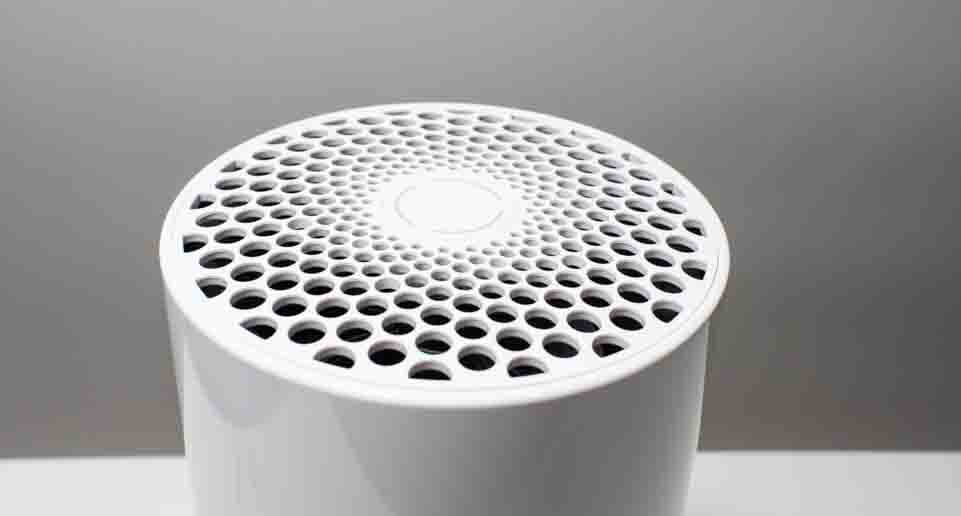
A single LED lights up when the lowest fan speed is selected and additional lights turn on as you increase the fan speed. These lights cannot be turned off if you’re sensitive to lights in a dark room while sleeping.
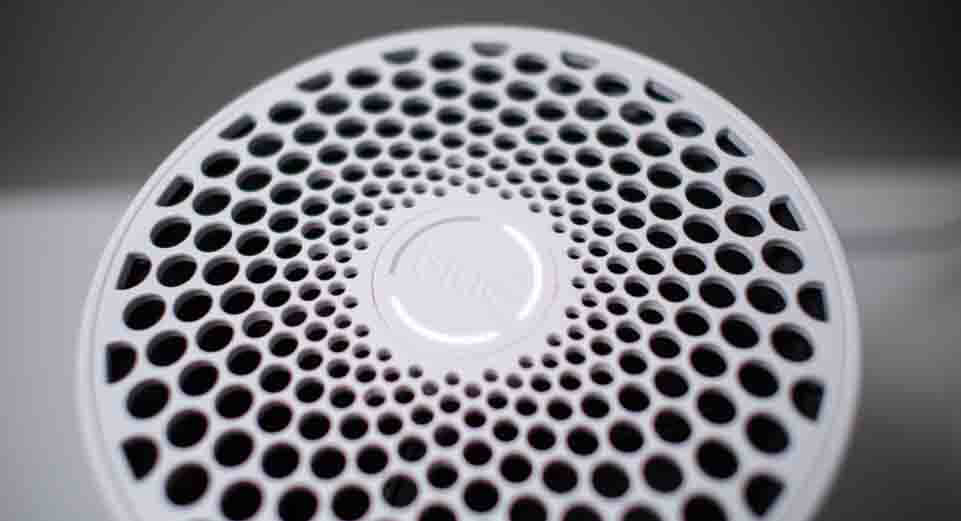
The unit is highly portable since it’s so light (only 3 lb.) and relatively small; however, there are no handles on the unit so you do need to tilt it over to lift it up from the bottom.
Again, there’s a single button on the unit to control fan speeds and turn it off. There are no auto modes, no timer, and there’s no smart functionality (app control via a phone) either.
A few other air purifiers in this size class do allow you to turn off control panel lights – the HPA100 is one example. Some also come with a timer – again, the HPA100 is a good example. Most units are going to be a little heavier – in the 5 to 10 lb. range instead of 3 lb. – although almost all of them have handles for easy pickup. It’s highly unlikely for you to find an air purifier with smart functionality at this price point.
Value
The Blue Pure 411 is normally priced right around $100, although its often upwards of approx. $120. The AC4825 usually retails for around $80 while the HPA100 normally retails for around $100. All of this is to say that the 411 is right around the price you would expect to pay for a unit at this output (around 100 CFM).
The 411 does have excellent energy efficiency – which makes it a better value than its competition over time in terms of power costs.
It also comes equipped with a washable pre-filter. The AC4825 and HPA100 require that the carbon filter be replaced at cost when it saturates with large particles. The 411’s pre-filter can easily just be vacuumed or washed.
On the flip side of things, the 411 requires that you replace the whole combination filter when only one of the components of that filter – either the particle or gas filter – saturates. The gas filter usually saturates much faster than the particle filter which means that you’ll need to replace the 411’s whole filter at a higher frequency than you would need to replace the separate particle filter on a comparable unit.
Another negative, in terms of value is this unit’s lack of features – no timer, no remote, etc.
All in all, is the 411 a better or worse value than its competition? Probably neither – it provides average value at this price point. It does have better energy efficiency than its competition and it also has a washable pre-filter but its set back by its combination particle/gas filter and lack of features.
What is the best value air purifier in this size class? Probably the AC4825 just because of its very low initial price. It also comes equipped with a HEPA filter, unlike the 411.
What is the best value air purifier overall? A top rated 250 CFM unit. For only a little bit more than the cost of the 411 you can move up to a unit with more than double the output, much better particle and gas filters, a separate washable pre-filter, similar energy efficiency, better noise output performance, and better durability.
Verdict
Our bottom line recommendations.
The 411 has a low initial price but it has to be set to a very loud setting to be effective even in smaller rooms. Furthermore, it doesn’t come equipped with a HEPA filter.
We definitely like and appreciate some aspects of its unique design but overall cannot recommend it. Instead, we recommend a top rated 250 CFM unit.
Add a Comment
Have a question or comment? Let us know below.

Comments